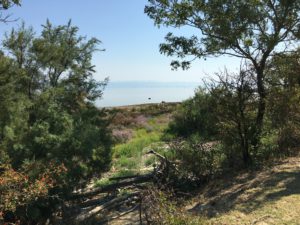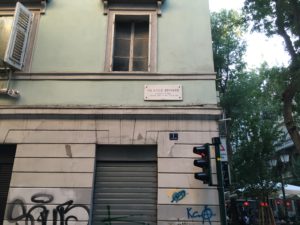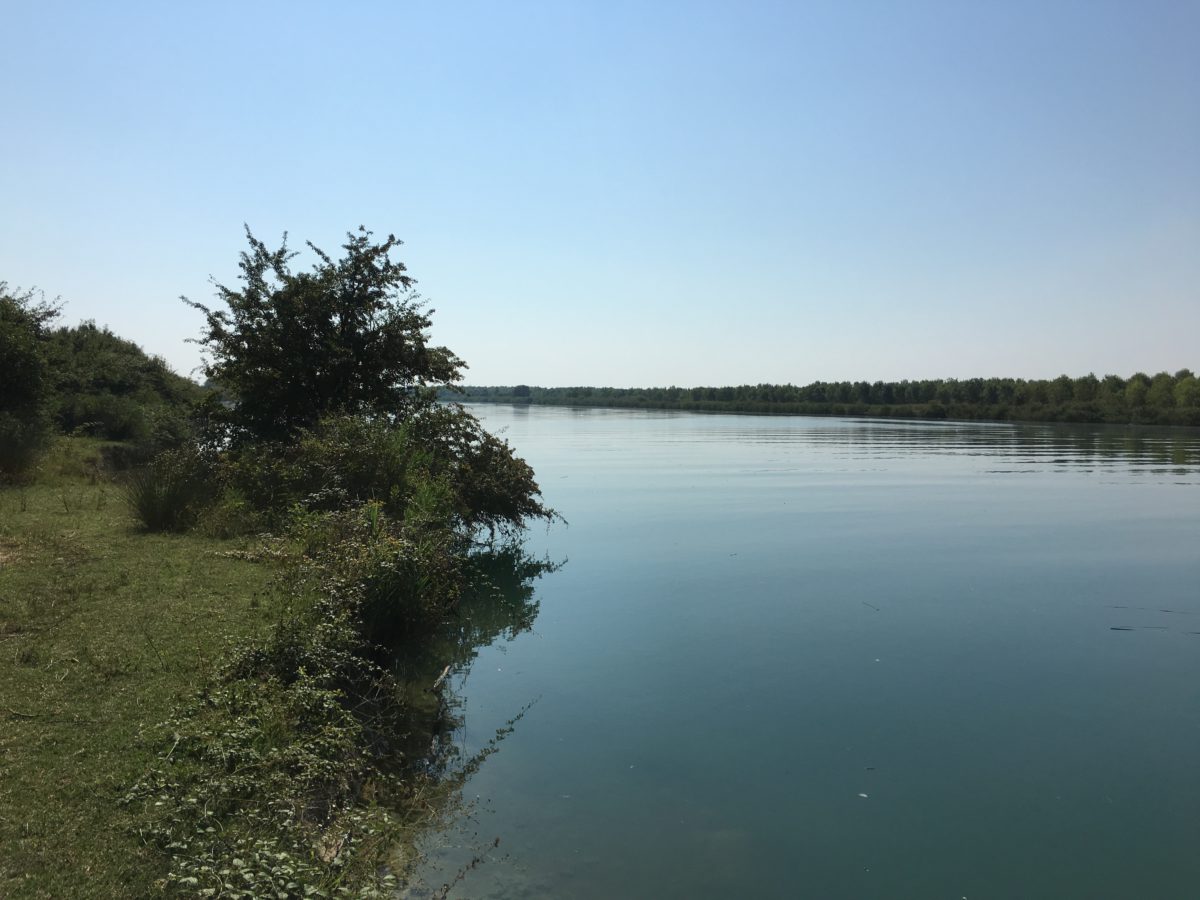We were on the way to Trieste, to meet the Brunners and other Hohenems descendants. But we made a stop over before we entered this promised land. We walked along the river, on the banks of the Isonzo, close before it ends in the Adriatic Sea. You couldn’t imagine a more peaceful site in bustling Italy. Today, a nature reserve on the Isola di Cano provides a retreat for thousands of birds, and horses from the Camargue. 100 years ago, between 1915 and 1917, the valley along the river was the scene of 12 bloody battles between Italy and the Austro-Hungarian empire. From the mountains down to the sea hundreds of thousands of soldiers—Italians, Austrians, Hungarians, French, British, Americans—fell victim to a war in which the front moved back and forth with no victors. Only in October 1918, when the Hapsburg empire fell apart, were the Italian troops able to overrun the collapsing Austrian Force—and Trieste became part of Italy after all.

Up the Isonzo a ways, Harry Weil, later the last cantor of the Hohenems community, fought his last battle in the war in 1917. As a “Tiroler Kaiserjäger” he had already participated in the battles of the Pasubio and the Cosmagon, Barolo Pass, Monte Majo and even the Three Peaks (Drei Zinnen) in the lovely Dolomites. He was fighting for his fatherland, the multiethnic empire, that appreciated and protected its Jewish subjects. At least emperor Franz Josef had said so. But in 1917 Franz Joseph was already dead. And in the upper Isonzo valley, near Flitsch (today Bovec in Slovenia), Harry Weil caught a bullet and had to leave the battlefield for good, severely injured.
A year earlier, another “Hohenemser” fell in the same war, but he was fighting on the other side. The fallen soldier’s father—Rudolf Brunner—had been loyal to the Hapsburgs, as were most Triestine elites, Jewish or not. The Brunners made their imprint on everything that was successful in Trieste, both culturally and economically. But the Brunner hero the city of Trieste is publicly celebrates—there is a street, a school and the barracks of a regiment named after him—is the fallen soldier who crossed the lines: Guido Brunner. As he was enlisting in university to study law in Bologna in 1915, he was called to arms to fight for Austria in the Carpathian Mountains, but decided to follow the Italian patriotism of his mothers side (the Jewish Segrè family). When he was caught by the Austrians and sentenced to death as a deserter, his Hapsburg loyal father Rudolf was able to convince the emperor to pardon and release him. The effort turned out to be in vain.

A few days after my own arrival in Trieste, Giancarlo Stavro told me the story of Guido with bitter humor. Taken back to the family’s Tuscan estate in Forcoli, the young man couldn’t wait to take away the car of his father and made it again to the Italian army. His time in the army would end in the battle of Monte Fior in the Veneto, north of Bassano del Grappa, in June 1916. His body was never found, only the one of his horse, Giancarlo reported with a smile.

The horse was buried in Forcoli. But the story wasn’t buried. Giancarlo recounted to me his own childhood memories of the visits in his great-grandfather’s villa in Forcoli in the 1950s, where the unmarked grave of the horse was the site of a daily routine of commemoration of the lost son of the family.


what a fine Essay!
What a fantastic, droll ending: The horse was buried in Forcoli. But the story wasn’t buried. Giancarlo recounted to me his own childhood memories of the visits in his great-grandfather’s villa in Forcoli in the 1950s, where the unmarked grave of the horse was the site of a daily routine of commemoration of the lost son of the family.”